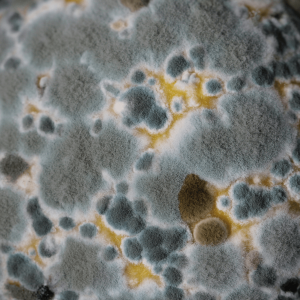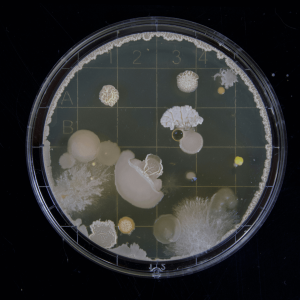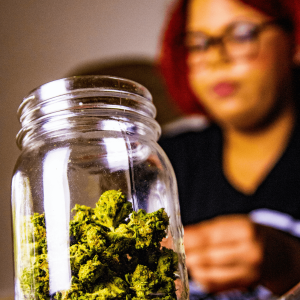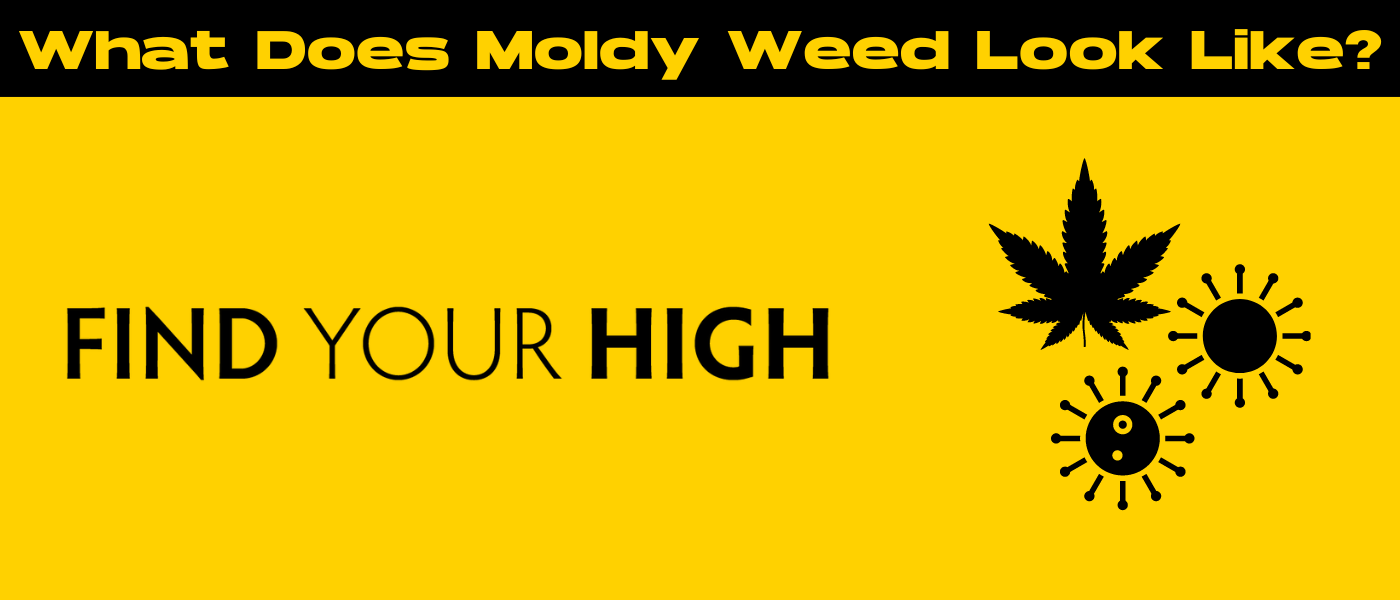Spotting mold on cannabis is a key skill for users and growers to ensure product safety and quality. But, what does mold look like on weed, and why does it matter?
Moldy weed not only affects the look and smell of cannabis but can also pose health risks when consumed. Inhaling mold spores could cause respiratory problems, allergies, and even systemic fungal infections, particularly in those with weakened immune systems.
In this blog, we’ll guide you through how to recognize moldy weed in an effort to reduce health risks and make your experience safer. Let’s begin!
Understanding Mold
Understanding mold is the first step in recognizing within your weed stash. In short, mold is a type of fungus that reproduces via tiny spores that travel through the air.
Common types that affect cannabis include Botrytis cinerea, often referred to as bud rot, and various species of Penicillium and Aspergillus. These molds thrive in environments with high humidity, poor ventilation, and inadequate storage conditions. So if your weed stash has any of the following, you may want to reassess — but more on that later.

Why Moldy Weed is a Concern
The presence of mold on cannabis is something to be mindful of as it can have significant health implications and affect the quality of the weed.
When moldy weed is inhaled or ingested, it exposes individuals to harmful fungal spores, which may cause respiratory issues, allergies, and in severe cases, systemic fungal infections – especially risky for those with weakened immune systems.
Additionally, it’s worth mentioning that mold impacts the potency and flavor of cannabis, lowering its quality. The musty, unpleasant taste and smell of mold-infested flower is a clear indicator that the product is compromised, leading to not just a subpar experience but potential health risks.
Identifying Moldy Weed: The Basics
Recognizing moldy weed largely involves distinguishing it from trichomes, which are the frosty, crystal-like structures that naturally coat healthy cannabis flowers. Unlike mold, trichomes serve as a sign of potency and quality.
The key differences between mold and trichomes lie in their appearance and texture. Trichomes are known for their sticky, shiny nature, often sparkling under light as if the bud were sprinkled with tiny diamonds. In contrast, mold presents itself more insidiously.
Here are some common colors and textures of mold on cannabis:
- White powdery substance: Sometimes mistaken for kief, this can indicate powdery mildew, a widespread mold type. If your flower isn’t pre-infused but takes on a white powdery look, you may want to toss it out.
- Grey or yellow fuzzy molds: These can be signs of botrytis cinerea or bud rot, occurring in denser nugs.
- Black or green spots: Often a sign of various mold or mildew species, indicating the growth has penetrated more deeply into the flower.
Types of Mold Found on Cannabis
Recognizing the types of mold that often affect cannabis can really make a difference in preventing and dealing with fungus-related problems.
Let’s dive into three common molds found on cannabis, their unique features, where they thrive, and tips for handling them.
Botrytis (Bud Rot)
Botrytis cinerea, better known as bud rot, shows up as a gray or brownish mold creeping into the snug spaces of cannabis buds from the inside out. The initial hint may be leaves turning yellow seemingly overnight, with the bud inside displaying signs of decay when examined closely.
Conditions that lead to botrytis growth: Bud rot thrives in environments with high humidity (above 60%), poor ventilation, and cooler temperatures. It often affects buds during the later stages of flowering when they are dense and have enough organic material to feed the mold.
Powdery Mildew
Powdery mildew presents as a white, powdery coating on the surface of leaves, stems, and sometimes buds. Unlike bud rot, which destroys the cannabis from within, powdery mildew spreads across the exterior. It almost looks like the plant has been dusted with flour or powdered sugar.
Preventative measures and treatments: To keep powdery mildew in check, it’s important to catch it early and ensure there’s good airflow and lower humidity. Additionally, we suggest keeping things tidy in your grow space. Using fungicides made for powdery mildew can help too, just be sure to follow the label instructions carefully!
Aspergillus
Aspergillus is a type of mold that can create aflatoxins, known to be highly carcinogenic. Breathing in aspergillus spores from moldy cannabis could result in aspergillosis, a respiratory infection that can be risky, especially for individuals with weakened immune systems or lung conditions.
Identifying aspergillus on cannabis: This mold appears as a dense matte of white or yellow spores on cannabis and can quickly spread to cover large areas under the right conditions. The best defense against aspergillus is to maintain a clean, dry, and well-ventilated growing and storage environment to prevent mold growth in the first place.

Other Signs of Mold Contamination
Aside from visible signs, mold contamination in cannabis can also be detected through sensory cues. Musty or unusual odors emanating from your stash are red flags, signaling the presence of mold even before it becomes visually apparent.
Mold has a distinct, earthy smell, similar to rotting wood or a damp basement, which differs from the fresh, herbal scent of healthy cannabis.
Additionally, feel the texture of your buds; if they display dampness or a spongy texture, it suggests excess moisture, which is a conducive environment for mold growth.
Prevention Tips
Preventing mold on cannabis starts with understanding the best storage conditions and the crucial role that both humidity and temperature control play.
After all, proper storage is not just about keeping your weed fresh; it’s about safeguarding your health. Here are some tips for ensuring your cannabis stays mold-free:
Proper Storage Conditions for Cannabis
The optimal method to store cannabis and prevent mold is by using an airtight container placed in a cool, dark spot. Glass jars with tight seals work best, as they won’t affect the flavor of your cannabis and won’t hold static.
Steer clear of plastic bags or containers, as they can lead to sweating and moisture buildup. It’s worth mentioning that the plastic mylar bags that many companies use to sell weed are entirely different and specially engineered to keep weed fresh.
Additionally, storing your stash in a dark place helps maintain the potency and flavor of your cannabis by preserving the cannabinoids and terpenes.

Importance of Controlling Humidity and Ideal Temperature
Controlling humidity and temperature is essential in preventing mold. Cannabis should be stored in conditions maintaining a relative humidity (RH) level between 59% and 63% to keep it from drying out or becoming too moist. Boveda Humidity Control Packs can help maintain this ideal RH level inside your storage container.
Excessively high temperatures can degrade the quality of your cannabis and encourage mold growth. Aim to keep your storage area at a temperature below 77°F (25°C).
Safe Cultivation Practices to Prevent Mold
Ensuring mold-free cannabis cultivation requires extra attention to cleanliness and the well-being of the cannabis plants.
Regular cleaning and sanitation of cultivation areas are super important; it helps get rid of any mold spores and stops them from spreading. Don’t forget to disinfect tools, containers, and surfaces, and keep removing plant debris that could hold mold.
It’s also key to go for mold-resistant cannabis strains and keep a close eye on the health of your plants as they grow. Healthy plants are less prone to mold, so make sure they have the best conditions to thrive, enough space for airflow, and watch out for any signs of trouble early on.
Checking for Mold Before Purchase
Before purchasing, it’s critical to conduct a thorough inspection of your flower to ensure you’re not buying mold-contaminated products.
When inspecting marijuana, visually check for any signs of the molds mentioned above, such as white powdery spots, gray or brownish fuzz, or any unusual patches of color that seem out of place.
Always pay attention to the smell; cannabis should have a fresh, herbal scent, not a musty or damp odor indicative of mold presence. Trust us, you can easily detect a moldy weed smell.
Feel the texture of the buds too; they should be dry and not spongy. Don’t hesitate to ask your dispensary or supplier about their storage practices and whether they regularly test their products for mold and other contaminants.
It might be helpful to ask if they’ve experienced any mold problems before and how they dealt with them. These questions can give you peace of mind and make sure your purchase is safe and high-quality.
What to Do If You Find Mold
Finding mold on your cannabis can be a bummer, but knowing what to do can help keep you safe. Here are the steps you should take:
- Stop Using the Product Immediately: If you suspect mold, stop using the cannabis right away to avoid any health risks.
- Inspect All Your Cannabis: Mold spreads easily, so check the rest of your cannabis supply for any signs of contamination.
- Separate Contaminated Product: Isolate any mold-infected cannabis from your clean supply to prevent further spread.
- Proper Disposal: Unfortunately, the safest option is often to dispose of the moldy cannabis. Do it in a way that prevents exposure to spores, such as sealing it in a plastic bag before throwing it away.

Is It Safe to Salvage Moldy Weed?
Moldy cannabis can pose health risks, especially for those with weakened immune systems, lung conditions, or mold allergies. In most cases, the best move is to toss out any moldy weed.
But hey, there could be a rare scenario where you might salvage parts of your stash:
- Surface Mold Only: If mold is only on the surface and hasn’t penetrated deeply, some may consider removing the affected area. However, this is risky and generally not recommended.
- No Vulnerable Health Issues: For individuals without respiratory conditions or weakened immune systems, the temptation to salvage may be higher. Still, it’s essential to weigh the risks carefully, as mold can have unseen and far-reaching effects.
In most situations, it’s better to be safe than sorry when it comes to moldy cannabis. Prioritize your well-being by choosing to toss out any sketchy product rather than risking your health.
Conclusion
In summary, recognizing and addressing mold on cannabis is essential for both your health and the integrity of your product.
Mold can impact the quality of cannabis, turning a potentially good experience into a bad one. Prioritize health by checking for mold before buying, storing properly, and knowing when to dispose of contaminated products.
FAQs
1. Is Mold on Weed Edible?
No, mold on weed is not safe to eat. Ingesting moldy cannabis can lead to health problems, including respiratory issues and allergic reactions. It’s important to discard any mold-infected product to avoid these risks.
2. What Does Bud Rot Look Like?
Bud rot typically presents as a gray or brownish fuzz that penetrates into the core of the bud, unlike surface molds that only affect the exterior. Infected areas may also appear darkened and feel wet or spongy to the touch.
3. How Bad is White Mold on Weed?
White mold, or powdery mildew, can significantly impact the quality and safety of weed. While it may seem less harmful than other types of mold, it can still pose health risks, particularly for individuals with compromised immune systems or respiratory conditions.
4. What Does Bad Weed Look Like?
Bad weed may exhibit several signs of degradation, including discolored patches, an unusual or musty odor, excessively dry or crumbly texture, and the presence of mold or pests. Healthy cannabis should have a fresh, pungent smell and a firm yet slightly springy texture.
5. Can you smoke moldy weed?
Smoking moldy weed isn’t a good idea because it can be risky for your health. Inhaling mold spores from contaminated cannabis can cause respiratory issues, especially if you’re allergic to mold or have existing breathing problems. Make sure your cannabis is mold-free before using it to stay healthy!
6. What does mold look like on weed?
Mold on weed typically appears as white, grey, or greenish fuzzy spots or a powdery substance on the cannabis flower. It might also present as dark spots or a slimy texture in more severe infestations. Mold can sometimes be mistaken for trichomes (the crystals on the bud), but unlike trichomes, mold will have a web-like appearance and a musty odor.
7. Does moldy weed get you high?
Moldy weed may still contain THC, the component responsible for the psychoactive effects of the cannabis plant, but the presence of mold significantly risks your health. Mold exposure can lead to serious respiratory problems and other health issues. Thus, while you might experience some level of high, the dangers outweigh the potential benefits. It’s crucial to prioritize health and safety over the effect.

 Rewards
Rewards





